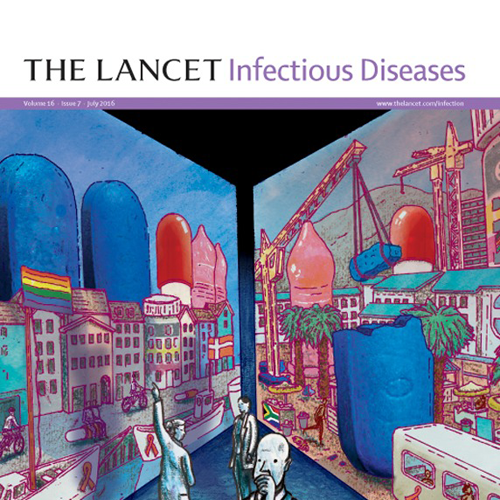Summary
Background
At global level, there are 37 million people infected with HIV and 115 million people with antibodies to hepatitis C virus (HCV). Little is known about the extent of HIV–HCV co-infection. We sought to characterise the epidemiology and burden of HCV co-infection in people living with HIV.
Methods
In this systematic review and meta-analysis we searched MEDLINE, Embase, CINAHL+, POPLINE, Africa wide Information, Global Health, Web of Science, and the Cochrane Library and WHO databases for studies measuring prevalence of HCV and HIV, published between Jan 1, 2002, and Jan 28, 2015. We included studies in HIV population samples of more than 50 individuals and recruited patients based on HIV infection status or other behavioural characteristics. We excluded editorials or reviews containing no primary data, samples of HCV or HIV–HCV co-infected individuals, or samples relying on self-reported infection status. We also excluded samples drawn from populations with other comorbidities or undergoing interventions that put them at increased risk of coinfection. Populations were categorised according to HIV exposure, with the regional burden of co-infection being derived by applying co-infection prevalence estimates to published numbers of HIV-infected individuals. We did a meta-analysis to estimate the odds of HCV in HIV-infected individuals compared with their HIV-negative counterparts.
Findings
From 31767 citations identified, 783 studies met the inclusion criteria, resulting in 902 estimates of the prevalence of HIV–HCV co-infection. In HIV-infected individuals, HIV–HCV co-infection was 2.4% (IQR 0.8–5.8) within general population samples, 4.0% (1.2–8.4) within pregnant or heterosexually exposed samples, 6.4% (3.2–10.0) in men who have sex with men (MSM), and 82.4% (55.2–88.5) in people who inject drugs (PWID). Odds of HCV infection were six times higher in people living with HIV (5.8, 95% CI 4.5–7.4) than their HIV-negative counterparts. Worldwide, there are approximately 2278400 HIV–HCV co-infections (IQR 1271300—4417000) of which 1362700 (847700–1381800) are in PWID, equalling an overall co-infection prevalence in HIV-infected individuals of 6.2% (3.4–11.9).
Interpretation
We noted a consistently higher HCV prevalence in HIV-infected individuals than HIV-negative individuals across all risk groups and regions, but especially in PWID. This study highlights the importance of routine HCV testing in all HIV-infected individuals, but especially in PWID. There is also a need to improve country level surveillance of HCV prevalence across different population groups in all regions.

